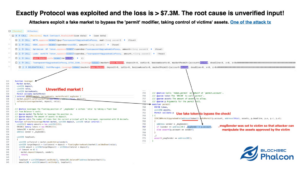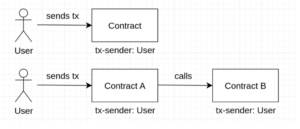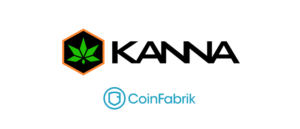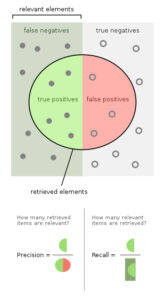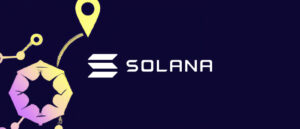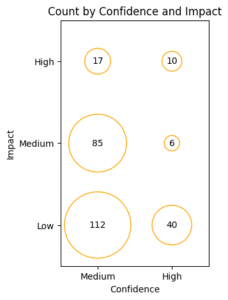
Web3 represents a new paradigm for applications on the internet that reflects a shift from centralized to decentralized networks, enabling direct peer-to-peer interactions. Tokenization is a popular technology within this framework. It is being used to turn a wide variety of assets into tradable tokens on blockchain networks. For example, tokenization can transform real estate, art, or any other value-carrying assets into a tradeable form. These tokens, often referred to as Non-Fungible Tokens (NFTs) or security tokens, can represent ownership in an asset and can be bought, sold, and traded across decentralized networks.
Businesses, healthcare institutions, and individual users alike are all beneficiaries of the robust security that tokenization can offer. Tokenization is the process of converting sensitive information into a string of characters, known as a token, that bears no explicit relation to the original data. Tokenization was initially created as a security measure for credit card data, but its use has expanded significantly, finding use cases in businesses other than finance that also seek to protect sensitive data.
Increased security is one of the key advantages of tokenization because it reduces the possibility of data breaches and makes data management easier. Comparatively, while encryption is another method of data protection, there are differences. Unlike tokenization, which replaces data with a random token, encryption transforms data into a coded format using a cipher. Tokenization is often preferred for its simplicity.
Assets Tokenization techniques should evolve beyond the mere creation of digital analogues of real-world assets. They should harness tokenization methods that encapsulate and standardize every financial facet of these assets, both their inherent value and potential risks. Current tokenization practices, unfortunately, don’t always capture these aspects, hence they underutilize the complete capabilities of blockchain technology.
One of the tokenization challenges we face nowadays, is that it is common to see tokenization applications present an asset on the blockchain but its terms might only be present in a separate document. Such separation can introduce errors and lacks the transparency essential for trust in financial systems.
To navigate these challenges and harness the tokenization benefits fully, it’s imperative that financial intricacies are tokenized using advanced tokenization methods, ensuring they are machine-readable and executable.
The significance of effective, efficient, and secure data security solutions like tokenization will only increase as the world gets more interconnected and our personal and financial data becomes more exposed.
- SEO Powered Content & PR Distribution. Get Amplified Today.
- PlatoData.Network Vertical Generative Ai. Empower Yourself. Access Here.
- PlatoAiStream. Web3 Intelligence. Knowledge Amplified. Access Here.
- PlatoESG. Automotive / EVs, Carbon, CleanTech, Energy, Environment, Solar, Waste Management. Access Here.
- PlatoHealth. Biotech and Clinical Trials Intelligence. Access Here.
- ChartPrime. Elevate your Trading Game with ChartPrime. Access Here.
- BlockOffsets. Modernizing Environmental Offset Ownership. Access Here.
- Source: https://blog.coinfabrik.com/the-rise-of-tokenization-of-real-world-assets/
- :has
- :is
- a
- across
- advanced
- advantages
- alike
- All
- also
- always
- an
- and
- Another
- any
- applications
- ARE
- Art
- AS
- aspects
- asset
- Assets
- BE
- Bears
- because
- becomes
- being
- beneficiaries
- Beyond
- blockchain
- Blockchain networks
- Blog
- both
- bought
- businesses
- but
- CAN
- capabilities
- capture
- card
- cases
- centralized
- challenges
- characters
- cipher
- coded
- Coinfabrik
- Common
- comparatively
- complete
- Container
- converting
- created
- creation
- credit
- credit card
- Current
- data
- data management
- data protection
- data security
- decentralized
- decentralized networks
- differences
- digital
- direct
- document
- Dont
- easier
- Effective
- efficient
- enabling
- encryption
- ensuring
- Errors
- essential
- estate
- Every
- evolve
- example
- expanded
- exposed
- Face
- finance
- financial
- financial data
- financial systems
- finding
- For
- form
- format
- Framework
- from
- fully
- harness
- healthcare
- hence
- HTTPS
- imperative
- in
- Increase
- individual
- information
- inherent
- initially
- institutions
- interactions
- interconnected
- Internet
- into
- intricacies
- introduce
- IT
- ITS
- jpg
- Key
- known
- like
- MAKES
- management
- measure
- mere
- method
- methods
- might
- more
- Navigate
- networks
- New
- no
- of
- offer
- often
- on
- ONE
- only
- or
- original
- Other
- our
- ownership
- paradigm
- peer to peer
- personal
- plato
- Plato Data Intelligence
- PlatoData
- Popular
- possibility
- potential
- preferred
- present
- process
- protect
- protection
- random
- real
- real estate
- real world
- reduces
- referred
- reflects
- relation
- represent
- represents
- Rise
- risks
- robust
- secure
- security
- see
- Seek
- sensitive
- separate
- shift
- should
- significance
- significantly
- simplicity
- sold
- Solutions
- String
- such
- Systems
- Technology
- terms
- than
- that
- The
- the world
- their
- There.
- These
- they
- this
- to
- token
- Tokenization
- tokenized
- Tokens
- tradeable
- traded
- Transform
- transforms
- Transparency
- Trust
- TURN
- unfortunately
- unlike
- use
- used
- users
- using
- value
- variety
- was
- we
- which
- while
- wide
- will
- with
- within
- world
- zephyrnet

